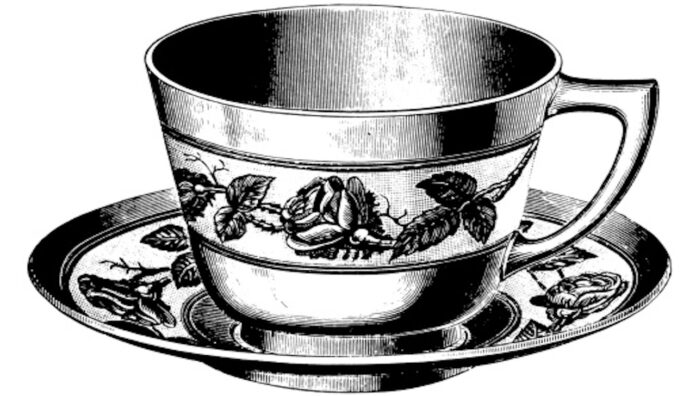It comes in teas, tablets, tinctures, and capsules, and may only look good.
In colonial Australia sarsaparilla was a hit. Like their American counterparts the British arrivals borrowed from the indigenous people, using the root of the vine as a treatment for a host of medical problems from arthritis to skin conditions. Its bitter-sweet taste also made the grade for food flavourings and beverages.1,2,3
In the early days of the Port Jackson colony the First Fleet surgeon Dennis Considen was impressed with the plant. Not only did he use preparations to treat the European arrivals for scurvy, coughs and chest colds, he sang its praise as a substitute for tea.4,5
Considen wrote a rave review to a colleague in England. ‘I have sent you some of the sweet tea of this country which I recommended and is generally used by the marines and convicts as such it is a fair antiscorbutic as well as a substitute for tea which is more costly.’5
What is sarsaparilla?
One thing sarsaparilla isn’t is sassafras, the tree product used in a mid-19th century alcohol drink, which was confusingly named sarsaparilla.2,3
Root beer also predominantly contained sassafras, not sarsaparilla as the ‘root’ in its name implies.2,6 Sassafras, by the way, is banned by the US Food and Drug Administration following research showing it caused liver cancer in rats.2,7
Real sarsaparilla is obtained from the dried root of a vine, a climbing or trailing plant with prickly stems and long thin roots. These plants are native to many tropical areas around the world and are species in the genus Simlax.3,8
Australia’s species, Smilax glyciphylla, grows in south eastern NSW and Queensland. Important commercial species are from Mexico, Honduras, Jamaica, the Caribbean and the WestIndies.1,3,8 To obtain the sarsaparilla, the roots are carefully harvested at 2–3 years of age. They are then washed, dried in the sun, bundled and exported.8,9
How it works
As Healthline notes, ‘sarsaparilla contains a wealth of plant chemicals thought to have a beneficial effect on the human body’.3
To illustrate, in the lab glycyphyllin reduces oxidative stress which can damage cells, proteins and DNA which may contribute to ageing, diabetes, cancer and neurodegenerative diseases like Alzheimer’s. Saponins may reduce joint pain and itchy skin, while others appear to be anti-inflammatory.
But consider the word “may”. What works in the lab may not work in the real world. Clinical trials are needed to confirm the findings in people.
Uses
Not only is sarsaparilla a flavouring for foods and beverages, it is used in pharmaceuticals.
Medical conditions for which sarsaparilla is supposedly helpful are wide-ranging: psoriasis, digestive problems, rheumatoid arthritis, kidney and liver disease, fluid retention, syphilis and gonorrhoea, and cancer.3,11,13
Bodybuilders also use sarsaparilla, believing the supplements contain muscle-enhancing anabolic steroids.3 But while the Therapeutic Goods Administration does permit sarsaparilla,evidence of medical effectiveness is limited. Supportive research is limited to pre-clinical, often older, laboratorytests.03,10,11,13
And sorry gym-junkies. There’s zero evidence that sarsaparilla contains useful steroids.3
References
- Cox SD, Jayasinghe KC, Markham JL. Antioxidant activity in Australian native sarsaparilla (Smilax glyciphylla). J Ethnopharmacol 2005 ; 101(1–3) 162–8. At: www.sciencedirect.com/science/article/abs/pii/S0378874105002588?via%3Dihub
- McVean A. The root in root beer is sassafras. McGill office for science and society 2018. At: www.mcgill.ca/oss/article/did-you-know/root-root-beer-sassafras
- Cafasso J. Sarsaparila: benefits, risks and side effects. Healthline 2022. At: www.healthline.com/health/food-nutrition/sarsaparilla
- Gilbert LA. Considen, Dennis (c. 1760–1815). Australian Dictionary of Biography. Melbourne University Press. Vol 1. 1966. At: https://adb.anu.edu.au/biography/considen-dennis-1916
- State Library of New South Wales. Papers of Sir Joseph Banks. Copy of a letter received by Dr Anthony Hamilton from Dennis Considen, 18 November 1788 (Series 23.26). At: https://web.archive.org/web/20110313060031/http://www2.sl.nsw.gov.au/banks/series_23/23_26.cfm
- Bundaberg.com. The difference between root beer and sarsaparilla. 2020. At: www.bundaberg.com/the-difference-between-root-beer-and-sarsaparilla/
- Amos JA. The dangers of sassafras. Everyday Health. 2017. At: www.everydayhealth.com/healthy-living/alternative-health/dangers-sassafras/#:~:text=The%20U.S.%20Food%20and%20Drug,it%20caused%20cancer%20in%20rats
- Science Direct. Sarsaparilla. In: Encyclopedia of food and health. 2016. At: www.sciencedirect.com/topics/pharmacology-toxicology-and-pharmaceutical-science/sarsaparilla
- At: Encyclopaedia Britannica. Sarsaparilla. www.britannica.com/topic/sarsaparilla
- Dayton L. Interview with representatives of the TGA and Food Standards Australia New Zealand. June 2022.
- RxList. Sarsaparilla. 2021. At: www.rxlist.com/sarsaparilla/supplements.htm
- Medical News Today. How does oxidative stress affect the body? 2019. At: www.medicalnewstoday.com/articles/324863#summary
- At: WebMD. Sarsaparilla – Uses, side effects, and more. 2020. www.webmd.com/vitamins/ai/ingredientmono-379/sarsaparilla



 Dr Peter Tenni[/caption]
Dr Peter Tenni[/caption]
 How should we deprescribe gabapentinoids, according to the Maudsley Deprescribing Guidelines[/caption]
How should we deprescribe gabapentinoids, according to the Maudsley Deprescribing Guidelines[/caption]



 Pharmacists have always prescribed, but they have the potential to prescribe much more
Pharmacists have always prescribed, but they have the potential to prescribe much more







